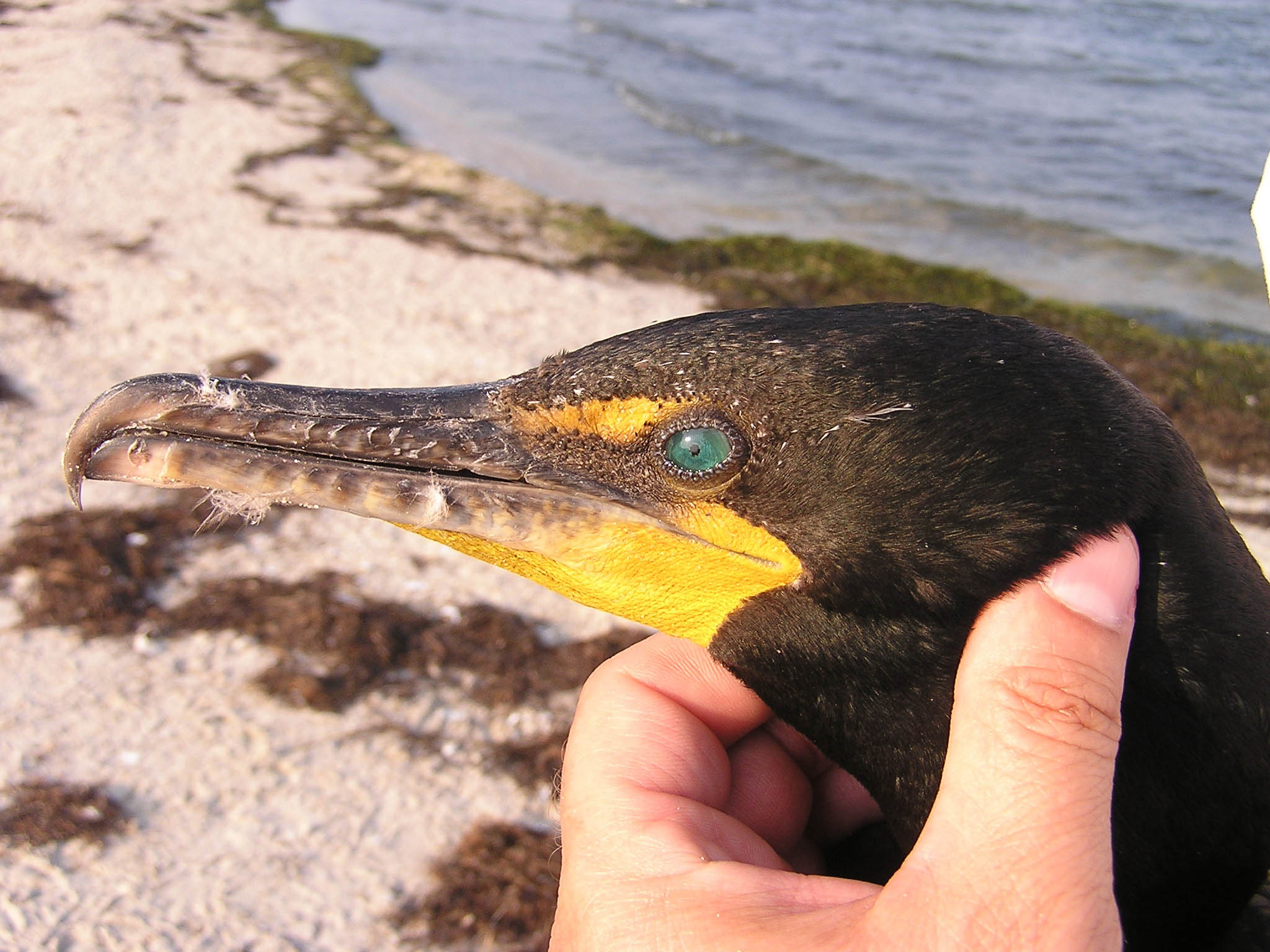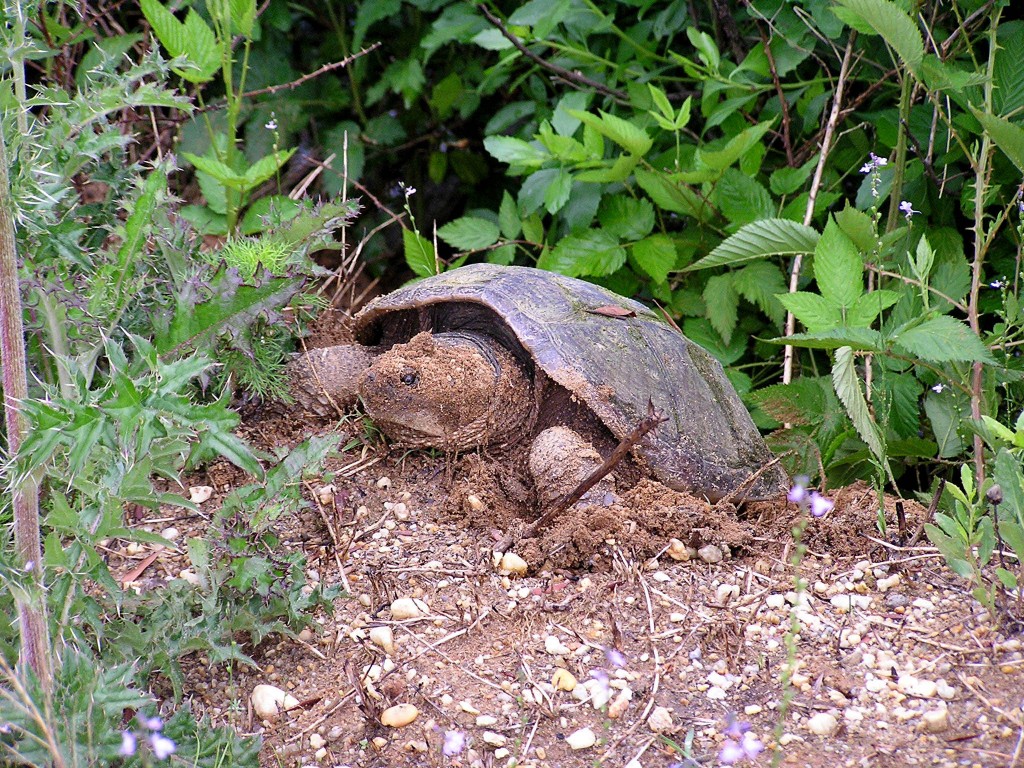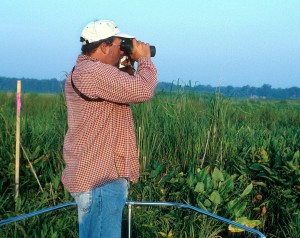Assessing the value of wetlands (EPA marsh surveys)

Foraging distribution of cormorants & osprey on the James River
October 7, 2008New professorship honors Mitchell A. Byrd
October 9, 2008
Written by Bryan Watts
October 8, 2008
Wetlands are recognized throughout the world as important natural resources. Coastal wetlands provide nurseries for commercially important fisheries, filter out nutrients and contaminants that may impact near shore waters, and provide habitat for a broad range of wildlife. In the United States, wetlands are protected by federal law in recognition of their value to both society and natural ecosystems. However, the jurisdiction over which these laws apply has been the focus of considerable controversy. In addition, the ways to quantify impacts to wetland function for mitigation purposes have not been completely resolved.

Common snapping turtles utilize wetlands for nesting, as do numerous other species. Photo by Bryan Watts.

Tree swallows perch in a tree over wetland habitat. Several species of swallows depend on the flying insects produced in wetland patches.
Development of a practical approach to assessing wetland function and degradation is a high priority for agencies charged with wetland protection. The Virginia Institute of Marine Science is in the process of developing a method to evaluate the ecosystem services provided by marsh patches using remote sensing techniques, as well as, the degradation of functions due to various human impacts. Such a methodology would allow for a rapid assessment of marsh value for patches over large geographic areas and predict the impacts of proposed changes in land use.

Bart Paxton surveys birds in a wetland patch. Photo by Bryan Watts.

Patch of cattail and three square in freshwater wetland. These plant species provide important cover and food for birds. Photo by Marion Watts.
CCB biologists are assisting in the development of assessment methodologies by evaluating bird communities within a set of wetland patches. During the 2008 breeding season, biologists conducted breeding bird surveys in forested wetlands. Bird surveys were conducted in 27 forested wetland patches, and resulted in 1,539 detections of 75 different species. The results will allow for an evaluation of the relative habitat value of specific patches that may then be compared to water quality and other taxonomic groups.



